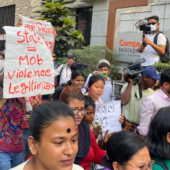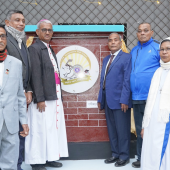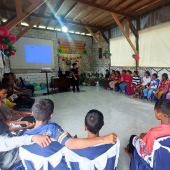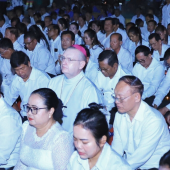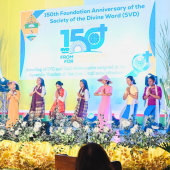Worst flooding in nearly 20 years in northeastern Bangladesh
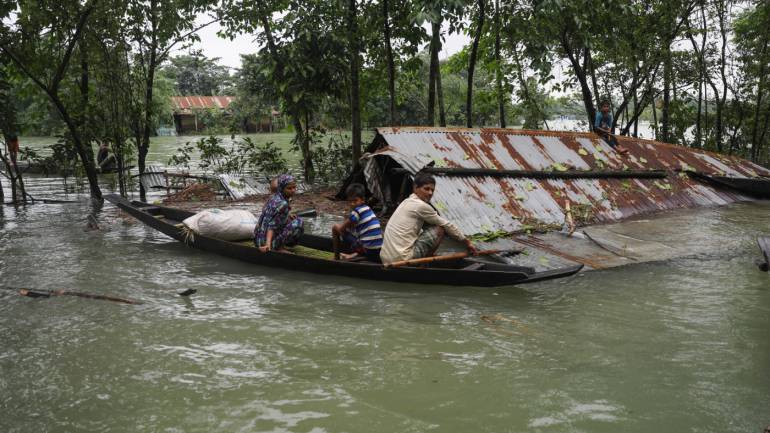
Monsoon rains have caused widespread flooding in northeastern Bangladesh and India, stranding nearly 6 million people and at least 59 people dead, according to reports.
The districts concerned are Sunamganj, Sylhet, Kurigram, Lalmonirhat, Nilphamary and Sirajgonj.
The floods are caused by the overflow of some rivers after heavy rains fed their upper reaches in the Indian states of Assam and Meghalaya.
Bangladesh and India have experienced increasing extreme weather in recent years, causing large-scale damage. Environmentalists warn climate change could lead to more disasters, especially in low-lying and densely populated Bangladesh.
Recently at least 17 more districts in the northern and central parts of the country are at risk of flooding, the Flood Forecasting and Warning Centre warned on June 19.
Almost 80% of Sylhet and 90% of Sunamganj is underwater in Bangladesh.
More than 40 lakh people have been marooned due to heavy showers and continuous onrush of water from upstream areas in India.
In the neighboring country's Cherrapunji in Meghalaya, the district had recorded 97 centimeter’s rainfall over 24 hours on June 17, the third-highest quantity of rainfall recorded there in the last 122 years.
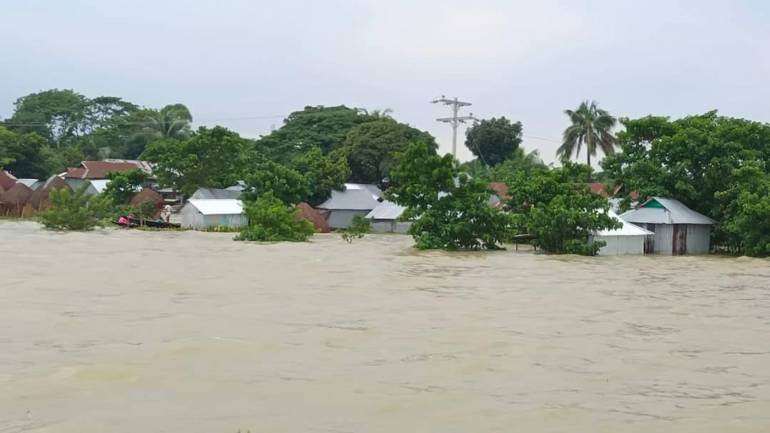
Over 300 villages in Moulvibazar have been inundated. In the district's Baralekha upazila, 200 villages under 10 unions have been submerged.
As the country grapples with how to deal with the growing disaster, some fear it could be the worst in 20 years; experts say the blame squarely lies on the feet of human intervention.
A member secretary of the Foundation for Disaster Forum, Gawher N. Wahra said, "Human intervention had destroyed the 124 km passage for discharging stormwater from Cherrapunji to Bhairab.”
"The huge amount of silt coming with the downpours flows down not only the tributaries and distributaries but also the flood plains. But we have developed a road network blocking the drainage passage,” said Wahra.
"It was clear that this was an anthropogenic cause,” said Gawher, adding, that with the country's geographical position, it will become prone to more extreme weather events in the future.
In Netrakona's Khaliajuri Upazila Nirbahi Officer (UNO) Ariful Islam said that around 60 villages in seven unions of the sub-division have been flooded. Most of the people living in these villages have become unsafe due to flood waters. Many families have stopped cooking. The affected families have taken shelter in 52 shelters.
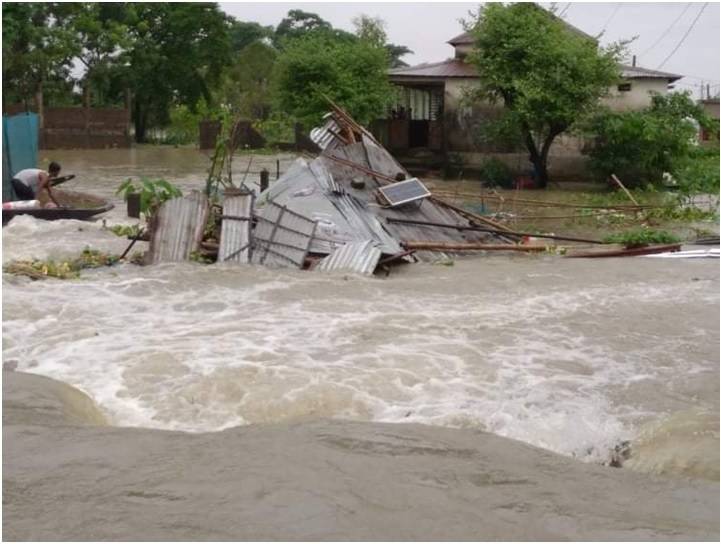
"The shelters themselves are packed with people, goats, chickens, cows, dogs and cats,” he added.
Somir Sarkar of Shampur village in Khaliajuri, said, "We are homeless and there was not a single house in the village which was not flooded.”
"No one can get out of the house, except on boats. People cannot go to the market. Without fuel, even cooking isn't possible," said Somir.
In Sylhet, Chief of Army Staff General SM Shafiuddin Ahmed visited various flood-affected areas on June 19.
During the visit, he distributed relief items among the flood victims at Bangabandhu Sheikh Mujib Hi-Tech Park and nearby flood-hit areas of Companiganj Upazila and spoke to the flood-affected people, a press release said.
The government allocated another 10 million Bangladesh taka (US$ 107625) for Sylhet and Sunamganj districts to distribute as humanitarian aid.
The Relief and Disaster Management Ministry June 19 allocated taka US$ 53812 each for Sylhet and Sunamganj, said a press release.
Rekha Begum from Sylhet area said, "Everything is destroyed especially our house and lands crops. Now, we are suffering for food, drinking water and shelter".
During the monsoon heavy rain and flooding, schools and religious institutions are also flooded a few days before secondary school exams.
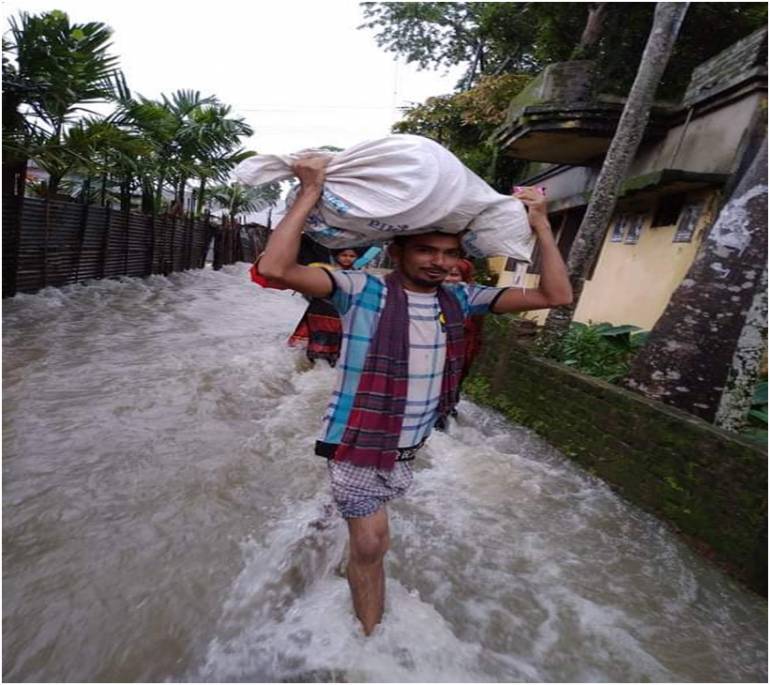
In the flood-hit areas, Caritas staff and volunteers are assisting the people in service work such as: taking them to shelters, liaising with ward and union disaster management committees, and distributing public and private relief.
Caritas Sylhet has already conducted a rapid need assessment as per the instructions of the Central Office.
Caritas Sylhet Regional Director said, "We are in constant touch with the central office. We hope that with the approval of the donors, we will be able to do something for the people of Banavasi.”
He said that our team is working to distribute dry food in one or two shelters of Jamalganj with the emergency allocation fund of the region. - Nikhil Gomes and Mary Anna Gomes/RVA Bengali Service
Radio Veritas Asia (RVA), a media platform of the Catholic Church, aims to share Christ. RVA started in 1969 as a continental Catholic radio station to serve Asian countries in their respective local language, thus earning the tag “the Voice of Asian Christianity.” Responding to the emerging context, RVA embraced media platforms to connect with the global Asian audience via its 21 language websites and various social media platforms.









